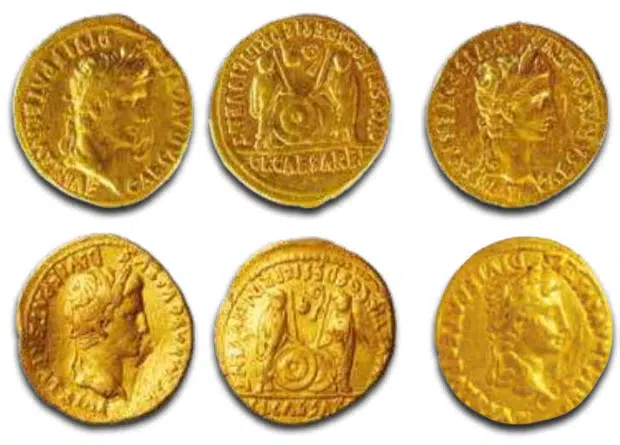British archaeologist Adrian Marsden reported on the results of a study of a treasure found several years ago in Norfolk County. The most valuable finds were ten Roman gold coins – aureus, minted during the reign of Octavian Augustus. The researcher believes that the treasure was buried at the beginning of the first century AD, a couple of decades before the start of the Roman conquest of Britain. According to his estimates, this amount is equivalent to a two-year salary of a legionnaire. This is reported in an article published in The Searcher magazine.
In many countries, it is forbidden to conduct field archaeological research without special permission – an open sheet. Moreover, for the use of technical means of search, for example, metal detectors or radars, the violator will face more severe punishment. This restriction seems necessary, since not only the artifact itself is important to archaeologists (even if it eventually ends up with them, and does not remain in a private collection), but also the context in which it was found. Amateur searches are fraught with the irretrievable destruction of monuments and cultural layers, which, by the way, can lie just a few centimeters from the modern surface. But such a ban is not in all countries. Thus, amateur archeology flourishes in Denmark, where a significant part of the valuable finds belongs to the Viking Age (1, 2, 3). Engaged in the search for antiquities and residents of the UK. For example, last year it was reported that Briton Kat Giles found the fourth Viking Age treasure on the Isle of Man in three years.
Adrian Marsden from the University of Oxford presented the results of a study of a treasure found several years ago in the English county of Norfolk. In 2017, near the city of Norwich, Damon and Denise Pye discovered an ancient coin, followed by new artifacts: more than a hundred Roman copper coins minted in the first three centuries of our era, two denarii, several Roman brooches and an old stater. Aerial photography at the site of the finds showed that a mound was probably built on this site in the Bronze Age, which was later used to make a cache of coins.
The main finds are coins that were scattered over a small area. According to Marsden, there is no doubt that they were originally a single hoard. It consisted of aureus – ancient Roman gold coins issued during the reign of the first Roman emperor Octavian Augustus (27 BC – 14 AD). All coins were minted in the city of Lungdum (now French Lyon). To date, ten such artifacts have been discovered and Marsden believes that there will be more finds. Perhaps the container in which these coins were originally stored is somewhere under the plowed soil.
The archaeologist suggests that the treasure was buried in the early years of the 1st century AD, about a generation before the start of the Roman conquest of Britain (43 AD). At that time, the Celtic Iceni tribe lived in Norfolk, whose leader at the beginning of the 1st century was an ally of Rome. The scholar noted that Roman gold coins rarely made their way to East Anglia, even after the island was conquered. In his opinion, the ten aureses discovered are comparable to the nine aureses that a legionnaire received as an annual salary in the middle of the 1st century. But the latter, due to interruptions in supply, were forced to spend about five coins on food, equipment and other things. Thus, the discovered treasure is approximately equal to a two-year salary of a soldier.
Photo: Adrian Marsden / The Searcher, 2022









